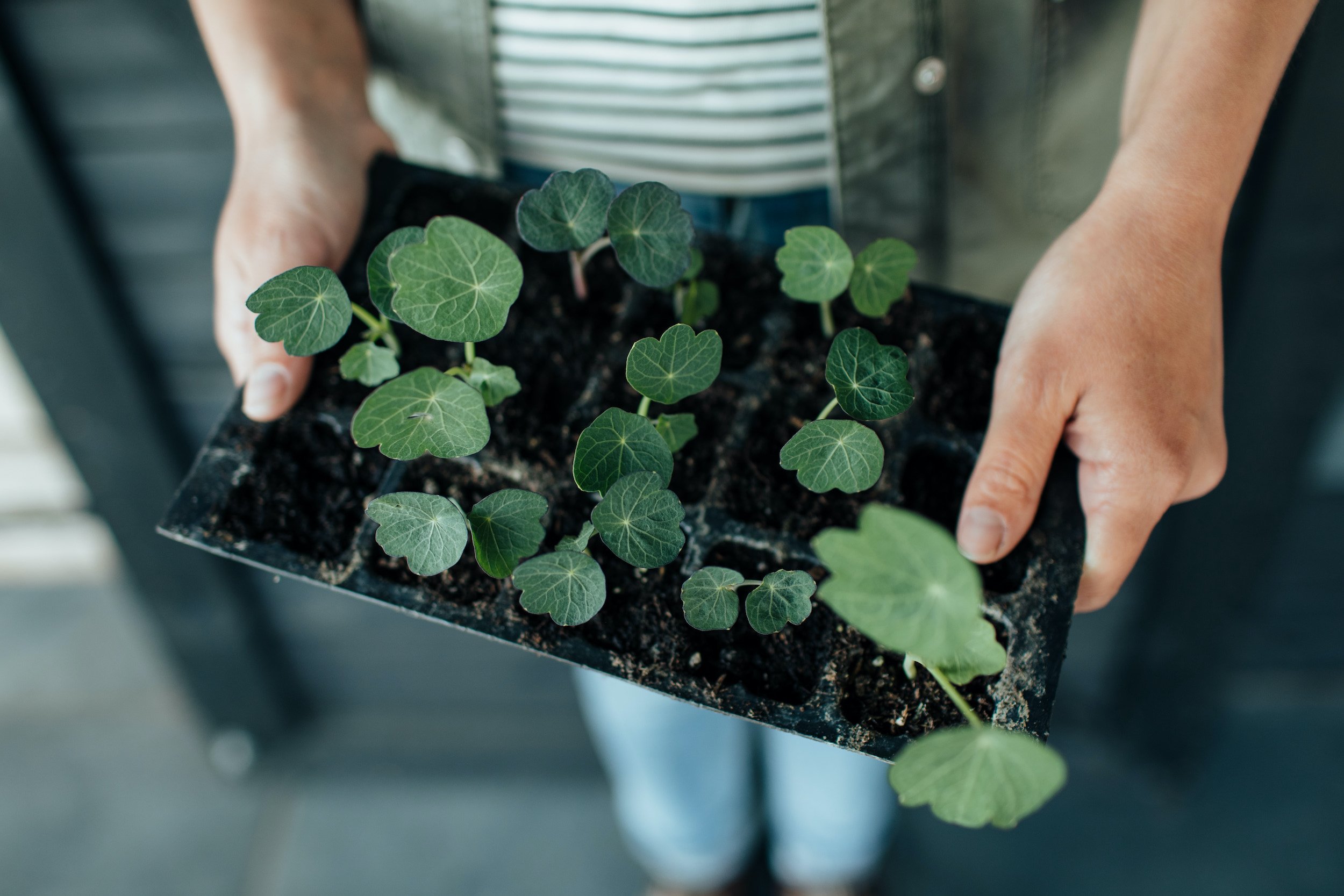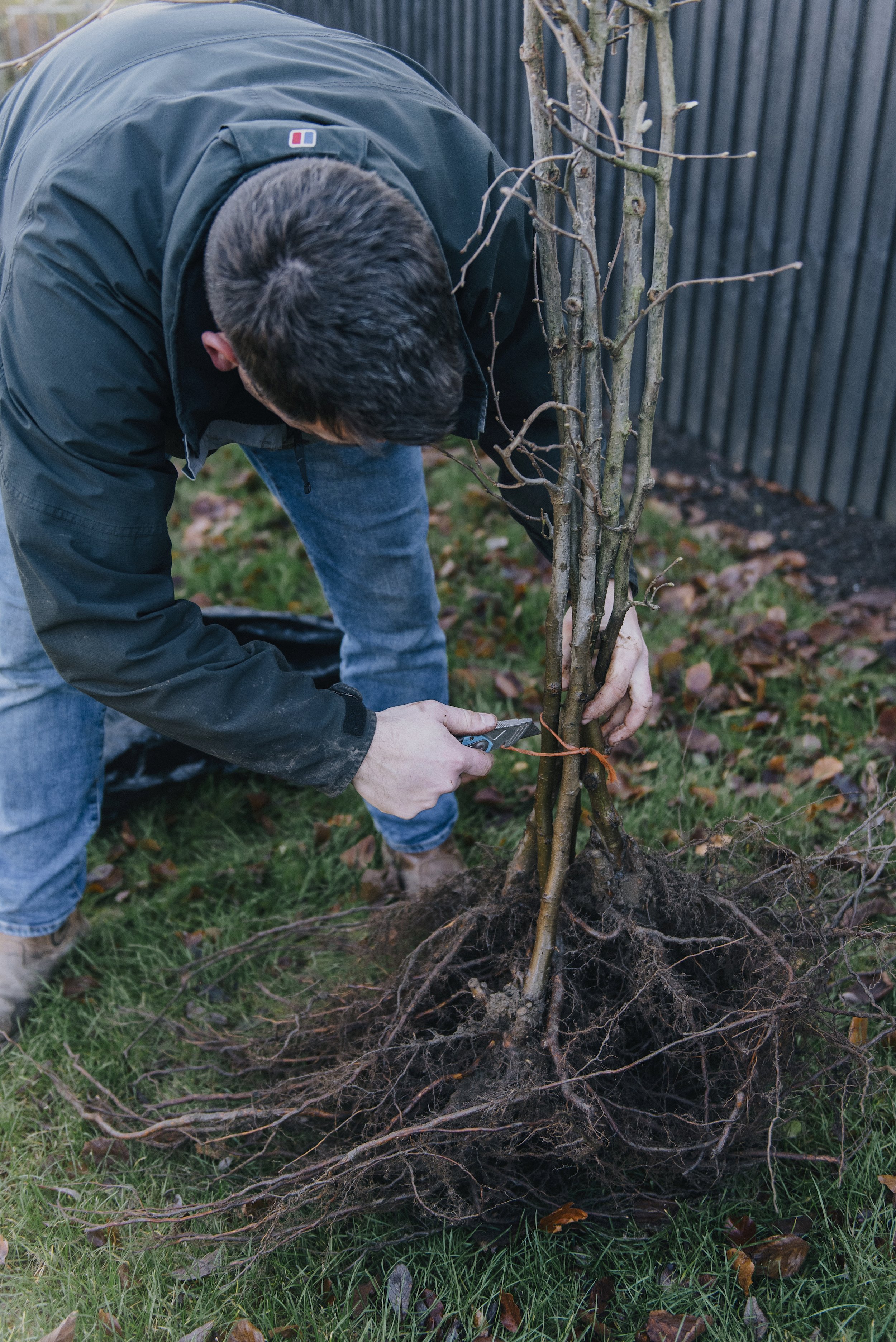Plant types explained
Different plant types: L-R foxglove (biennial), eucalyptus (perennial tree), verbascum (short lived perennial), eryngium (herbaceous perennial), sweet pea (annual)
The world of gardening is full of jargon, but perhaps nowhere more so than in the terms used to explain what all of the different plants are.
While most of us are happy colloquially referring to a shrub, tree or flower, when it comes to horticulture there are lots more sub categories that are used to pin down exactly what type of plant we’re growing.
Understanding what the different categories are can be helpful in understanding how best to grow the plant (or how to stop them growing, in the case of weeds!) so here is a short, hopefully jargon-free, run down on what the different plant types mean…
Annual
An annual is a plant that completes its entire life cycle within one year.
So, it grows from seed, starts to put out green growth (in hort terms usually called “vegetative growth”), reaches maturity, flowers and sets seed, all within one year. Though we say “within a year,” for a huge amount of plants in this category, this is more often within a growing season, typically from round about March, when a lot of seeds start to germinate, until the Autumn time when the first frosts hit, and the plants die.
In gardening, annuals tend to be plants we grow either for their flowers or for their fruits. So, flowers such as cosmos, zinnias, rudbeckias and sweet peas are all annuals: we would plant the seed in the Spring of the same year that the flower arrives.
(Though there are, slightly confusingly, also perennial versions of some of these flowers, like the perennial sweet pea and the chocolate cosmos…)
Vegetables such as courgettes, squash, tomatoes and cucumbers are all annuals. Grown from seed in the Spring, they are ready to harvest the same year.
As a general rule, annuals are relatively simple to grow from seed, with returns on your time in the same year, and this is usually the easiest way to add them to your garden. You do often find plug plants (small plants) available in garden centres and nurseries of lots of popular annuals around Spring time. Just remember, if you’re buying an annual as a plug plant, that it won’t come back the following year, you’re just getting the plant for that one season, after which it dies.
Annuals can further be divided into half hardy annuals and hardy annuals.
A half hardy annual (you’ll sometimes see this written as HHA) is a plant that can’t withstand frost. If seeds of half hardy annuals are sown outside too early, and there is a frost after they have germinated, the plant would die. For this reason, half hardy annuals are often started off inside and planted out once the last frost has passed – sweet peas and cosmos are excellent examples of this – or sown in situ in late Spring when there is no chance of a late frost.
Hardy annuals can withstand frosts and winter temperatures. These are often sown outside the previous Autumn or in early Spring before the last frosts. Vegetables that are hardy annuals include beetroot, radishes and broad beans, while popular flowers include Ammi visnaga, cornflowers (Centaurea cyanus), nigella and the majestic sunflower – surely one of the all-time most popular flowers to grow from seed, especially for children. (See our ten favourite seeds to sow with kids for more of our top choices…)
Another huge category of annuals are the plants that we commonly refer to as weeds! Lots of weeds (or wild flowers) are hardy annuals, meaning their seed can germinate early on in the year and they can get a head start on plenty of other plants and start growing before there is much competition (one of the things that makes them a weed…) In fact, many weeds can actually complete more than one life cycle a year, and these are called ephemeral plants, another subset of annuals. Annual meadow grass (Poa annua in Latin) is a great example.
Biennial
A biennial is similar to an annual, except that it takes two years to complete its life cycle.
So it germinates from seed, puts down roots and starts to make vegetative growth in the first year. In the second year, it flowers, sets seed and dies.
One of the most popular biennials that we grow in our gardens is the foxglove, others include poppies, wild carrots and certain types of wallflower.
Just like annuals, biennials are a great plant to grow from seed, though you need to nurture them for a little longer. On the whole, biennial seeds are sown in the Spring or Summer before they flower, putting out green vegetative growth in the first year and flowering in the second year.
Perennial
A perennial plant, then, is any plant that takes more than two years to complete its life cycle.
This is a huge range of plants (basically everything else!) and stretches from the “short lived perennials,” such as lupins, aquilegias and echinacea, which would usually die after about three years, to a yew tree that could live for a few thousand years (an incredibly humbling thought, when you pass one in the park...)
In order to break down this huge range of plants a bit more, there are, you guessed it, further sub categories.
Herbaceous perennial
Herbaceous perennials are the plants that grow without any woody stems. We use them a lot in gardening, and they tend to be some of the more show stopping flowers that you find. They usually die back over winter, going dormant beneath the soil, ready for fresh shoots to appear again in the spring time, and the plant to grow – sometimes a huge amount in one season – often flower, and then die back once again for the winter months.
Classic examples of herbaceous perennials are peonies, astrantia and penstemons.
When using herbaceous perennials, the main thing to remember is that during the late Autumn and Winter months, the spots where they are planted will just be bare soil. So it’s good to position them around evergreen and woody plants, or early flowering bulbs, to break up the sight of bare earth.
That said, not all herbaceous perennials die back, there are some that will retain their foliage throughout the winter months, even though they don’t have a woody structure. Hellebores are a good example.
Bulbous perennial
This is just another way of saying “bulb”… These are the plants that grow from a bulb each year, putting up green shoots, flowering and then dying back down again. Most flower in Spring time (tulips, daffodils, crocuses and so on) but there are some Autumn flowering bulbs as well (such as colchicums, also known as Autumn tulips, crocosmias and nerines).
Some bulbs will “naturalise” where they are grown, after a few years, the bulbs make new bulbs, which make new bulbs and so on, until you have a lovely clump in the place of the few you first planted. Crocus and snowdrops have a great habit of doing this.
Others tend to be more short lived, and will survive for a year or two in the garden, before dying, when you will need to plant fresh ones. Tulips are a classic example of a bulb that fades over time.
Evergreen
You already know this one, of course, but an evergreen is a plant that retains its leaves throughout the winter months. The usual category to think of is conifers (although there are a few deciduous conifers, most retain their leaves) or typical “winter” plants such as holly, ivy, pyracantha and so on…
In the garden, evergreens provide year-round structure, often said to make up the “backbone” of the garden. With enough appealing evergreens, there is always something to look at, even in deepest winter.
Semi evergreen
Semi-evergreen can mean a couple of different things, but is contained under the umbrella term of a plant that is not reliably evergreen, but not completely deciduous.
This might mean that it loses its leaves only on the coldest winters, but will keep them through mild winters.
It can also mean that the leaves die, but are retained on the plant, such as a beech hedge, where the brown leaves stay on the stems throughout winter, but fall in the Spring time, once new green buds start to appear. (This can look wonderful in a spot where sun hits behind the leaves, making them glow bronze in the rays…)
Another meaning of semi-evergreen can be for plants that lose most, but not all, of their leaves. Honeysuckle is a plant that tends to shed some leaves over the Winter months, but retain some on the plant.
Shrub
A shrub is a woody plant that doesn’t have one single stem (or trunk) in the way that a tree does.
There all sorts of classic shrubs that we immediately think of: camellia, hydrangea, roses, rhododendrons, hebe and so on… But perhaps surprisingly, some plants that are usually thought of as trees are actually large shrubs. Such as magnolia, some acers, or cotinus, the ‘smoke bush’.
Shrubs can be deciduous or evergreen. In the garden, they provide height and structure. Depending on the type of shrub, they might also give a flowering season, such as camellia or ceanothus, or provide evergreen structure, such as holly.
Trees
Trees, then, are the woody plants that do have a single stem, known as a trunk. Some are obvious: oak, elm, ash, beech and so on. Whereas some plants that we might think of as trees, actually aren’t (in horticultural terms anyway!) – tree ferns, despite the name, don’t actually have a woody stem, the same is true for certain palms.
In a garden, trees provide height and structure. Deciduous trees tend to provide interest at different times of the year: often with blossom, fruits and Autumn leaf colour. Evergreen trees provide year-round structure and colour. The most important thing to remember when choosing a tree for your garden, is to check its eventual height, and also its growth speed. Certain trees, though undeniably beautiful, can quickly grow and be unsuitable for a space in a private garden – eucalyptus, for example, are often planted for their glorious leaves and beautiful bark, but tend to outgrow their space within a few years in all but the biggest gardens.





